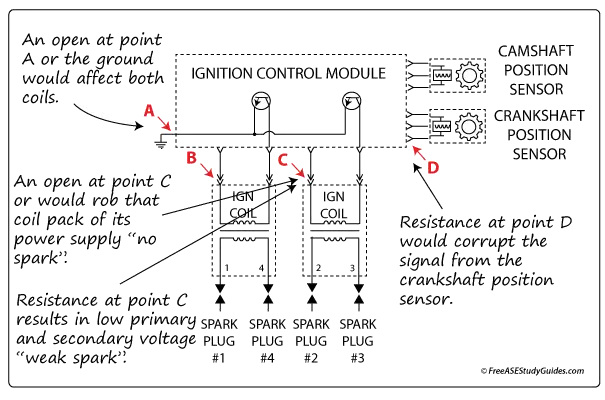Waste Spark Electronic Ignition

Some Electronic Ignition systems fire more than one cylinder at a time. It's known as the waste spark method. These ignition coils have two towers providing the spark for two cylinders simultaneously. One cylinder is on its compression stroke, and the other is on its exhaust stroke. One spark plug fires into an air-fuel charge and the other into inert exhaust gases.
Because of the design of the coil, a faulty coil results in a misfire at more than one cylinder. Scanned data will indicate two misfires at the same time.
The ignition control module in the illustration below relies on inputs from several sensors, including the crankshaft position sensor and the camshaft position sensor, to make decisions.

An open at point A would result in a no-start condition. This is a common ground for both coils. The primary circuit is ground-switched.
An open at point B would deprive the coil's primary circuit of necessary voltage. This would deprive the number 1-4 coil of power, rendering it useless.
Excessive resistance at point C of the 2-3 coil results in a weak spark at the #2 and #3 cylinders. This is because the low primary voltage reduces secondary output.
Excessive sensor circuit resistance results in a false signal. The sensor at point D provides the crankshaft's position to the control module. Resistance caused by a frayed wire or spaded plug would corrupt the sensor's signal, affecting the operation of both coils.